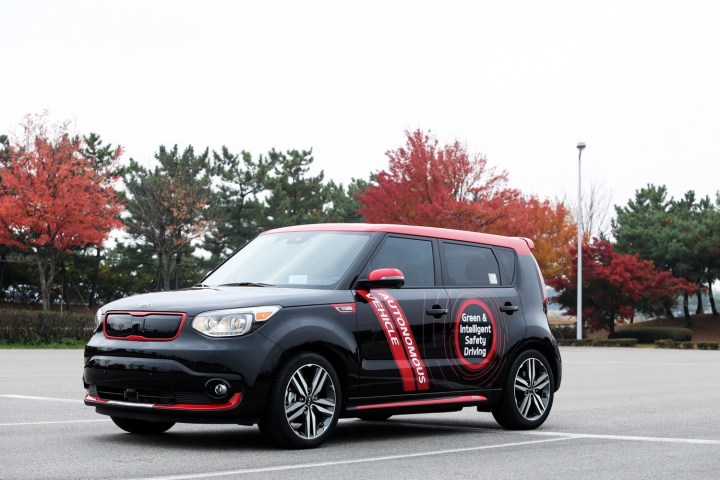
Even autonomous cars need a license to drive. Nevada and several other states have policies in place governing the testing of self-driving cars on public roads. This helps clear up the messy legal situation that might result if one of the cars gets into a crash. In Nevada, those cars are identified by red license plates.
Those red plates will now be worn by a group of autonomous Kia Soul EV electric cars. The prototypes will be deployed in concert with Kia’s parent, Hyundai, as both carmakers look to develop autonomous-driving tech for use in near-future production cars. The two carmakers plan to invest $2 billion by 2018 for development.
Kia wants to launch “partially-autonomous driving technologies” by 2020, and put a fully-autonomous car on sale by 2030. Its plans include a “Highway Driving Assist” that combines the functions of a lane guidance system and adaptive cruise control. It will maintain a safe following distance, obey speed limits, and allow for the overtaking of other cars automatically, according to Kia. It will also be supplemented by a “Traffic Jam Assist” at lower speeds, and Kia is planning an automated parking system as well.
These systems will form the foundation for the self-driving car Kia is promising for 2030. The company hasn’t disclosed many details about this project, but it did say it expects autonomous cars to make use of vehicle-to-vehicle communication, or V2V. This involves a WiFi-like communications medium to allow cars to signal their locations to each other and to networked infrastructure. V2V proponents claim this can create situational awareness beyond the limits of human senses.
But while V2V could aid human drivers by, for example, warning them of an oncoming car in a blind spot, it could be assimilated by self-driving cars as well. A communications system makes the task of orienting the cars much easier, providing more information on the locations of other vehicles.
Editors' Recommendations
- The Kia EV9 is the template for a modern car interior — here’s why
- Waymo robotaxi attacked and set on fire in San Francisco
- Beleaguered robotaxi startup Cruise lays off quarter of workforce
- Cruise woes prompt production halt of fully driverless van
- Cruise’s robotaxi service suspended by California regulator


